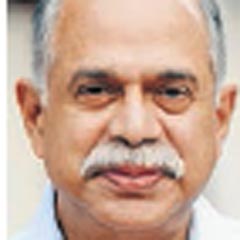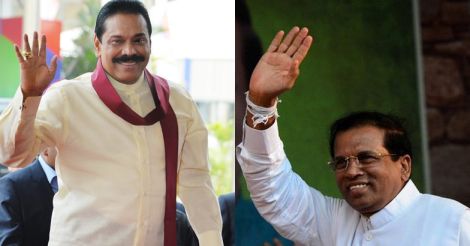Sri Lanka has witnessed a series of notable developments in succession, starting with the election to the local self-government bodies on February 10.
The country is ruled by the United National Front led by president Maithripala Sirisena and prime minister Ranil Wickremesinghe.
However, their parties contested separately in the election to the local self-government bodies, leading to a massive victory for the Sri Lanka People’s Front, indirectly backed by former president Mahinda Rajapaksa.
President Sirisena’s Sri Lanka Freedom Party has only 37 MPs. The government is sustained by the 106 seats commanded by prime minister Wickremesinghe’s United National Party.
The rift between the president and the prime minister has been widening for some time. Sirisena has openly alleged that the prime minister had not steered the country’s economy well.
He said that Wickremesinghe had been lax in investigating the accusations against the Rajapaksa family and even alleged that the government had facilitated major scams.
The president even said that he had been sidelined in policy formation.
The president has ordered for a probe into allegations related to the bond sale of the central bank.
The commission which probed the allegations recommended the prosecution of the central bank governor and his son-in-law. Grapevine is that the prime minister tried to bail out the central bank governor.
The president had raised all these allegations against the prime minister during the campaign for the local body election.
Against this backdrop, a riot broke out near Kandy between the Sinhalese and Muslim communities. A majority of people in Sri Lanka are Sinhalese practising Buddhism. Muslims constitute about 10 percent of the population and they are concentrated in the northeastern province. Though they are Tamil-speaking, they were targeted by the LTTE and forced out of the northern parts of the country in the 1990s.
A sizable population of the Muslims live in the Buddhist-dominated Kandy. The trouble started as a squabble related to a road and soon ballooned into a riot. The police stood as mute spectators when the houses, shops and places of worship belonging to the Muslims were destroyed.
Normalcy returned only after the president declared a state of emergency on March 6. The emergency has since been called off.
Analyses of the riots differ, from a claim that Rajapaksa’s victorious party had a role to play in the riot, to a theory that the violence was Buddhist backlash against the growth of Wahhabism in the country.
The latest development from the complicated political landscape of Sri Lanka is a no-confidence motion brought in by the opposition parties against the prime minister.
The motion can be passed only if Sirisena’s 37 MPs vote for it. The Rajapaksa camp may be also expecting defections from the United National Party.
If no such thing happens, Wickremesinghe could defeat the resolution with the help of the Tamil National Party and the Sri Lanka Muslim Congress Party.
Still chances of good governance are remote in Sri Lanka, where the president and the prime minister have locked horns. This uncertainty is expected to continue until the general election of 2019.
(The writer is a former director general of police and a former director of the Research and Analysis Wing.)

























 Mahinda Rajapaksa and Maitripala Sirisena. Photo: AFP
Mahinda Rajapaksa and Maitripala Sirisena. Photo: AFP